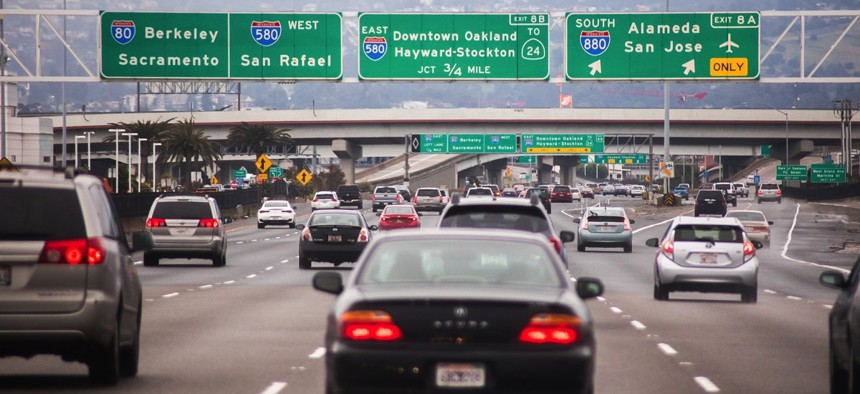U.S. Transportation Funding Is Not Created Equal

Some states shoulder the lion’s share of state and local road costs; others lean on Uncle Sam.

With fuel-efficient vehicles and inflation on the rise, the federal gas tax contributes to a shrinking share of U.S. transportation spending. How states and cities make up the difference depends on where you are. A map from the Tax Foundation charts and ranks how far homegrown highway tolls, state gas taxes, and user fees for license registration, vehicle weight, and the like pay for road projects within state borders.
While much of the rural West and South leans heavily on federal revenues to pay for their roads, Hawaii pays the most out of its own pocket, with hefty vehicle weight fees and sky-high state gas taxes.
Tiny, toll-sucking Delaware pays the second-highest share of state and local taxes and fees for its drivers. (That rhymes well with the tollbooth bottleneck on Interstate 95 that distinguishes it to many East Coast travelers.) After that, highly populated, highly congested states that use tolls, fees, and taxes to control congestion and pollution make up most of the top ten. At number three, New York State reaps about $3 billion dollars per year from Port Authority and MTA bridges and tunnels alone. Ranking fourth, Florida has the most toll roads in the country. New Jersey, Maryland, Oregon, North Carolina, Michigan, and California fill out the rest.
Homegrown transportation funding does not equate to adequate funding. Five states have ratcheted up their gas taxes since January 2017 alone, but these are just as vulnerable to growing cavalries of hybrid and electric vehicles on the road. Tolls rarely cover the full cost of the brand-new roads they’re often attached to—note that only a few states that pay more than average for their “own” roads keep them in above-average condition.
But funding transportation with taxes and fees paid by users—as opposed to drawing from, say, a general fund—serves a useful psychological purpose. When drivers cough up to travel crowded streets or highways, they attach a certain value to their drive; when they pay nothing—as in most cases—the roads seem “free.”
Yet driving gets paid for, eventually—not just through other taxes, but through the price of an apartment and a load of groceries (the passed-on cost of parking), the unimaginable hours lost to traffic congestion, the vast amounts of energy consumed and climate-altering gases emitted, the air that’s hazardous to breathe. By and large, these costs are externalized. Besides paying for roads, user fees—particularly per-mile driving fees, and congestion pricing, both of which are mostly untested in the U.S.—would help drive those costs home.
Laura Bliss is a staff writer at CityLab, where this article was originally published.
NEXT STORY: Unisys launches turnkey cloud services





